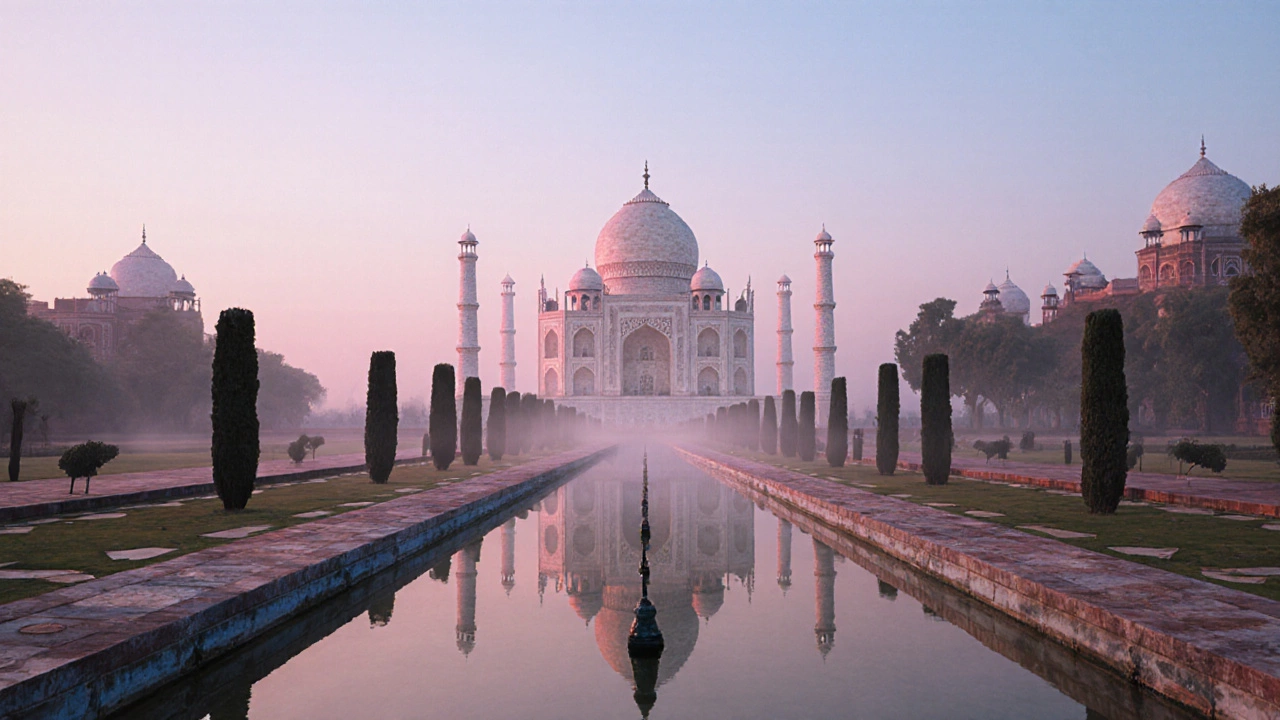Khajuraho Temples: Ancient Sculptures, Sacred Architecture, and What Makes Them Unique
When you think of Khajuraho temples, a group of 10th-century Hindu and Jain temples in Madhya Pradesh, India, known for their intricate stone carvings and UNESCO World Heritage status. Also known as Khajuraho group of monuments, they’re not just religious sites—they’re open-air museums of human expression, artistry, and devotion from the Chandela dynasty. These temples weren’t built to hide beauty; they were built to celebrate it. Unlike most ancient temples that focus only on gods and rituals, Khajuraho blends the divine with the human, showing everything from dancers and musicians to lovers in intimate poses. This isn’t shock value—it’s philosophy. In the Hindu tradition, pleasure and spirituality aren’t opposites. They’re part of the same journey.
The Chandela dynasty, a powerful Hindu kingdom that ruled central India between the 9th and 13th centuries built these temples as acts of faith, not fame. Over 85 temples once stood here. Today, 25 remain, grouped into three clusters: Western, Eastern, and Southern. The Western group is the most visited, home to the Kandariya Mahadeva Temple—the tallest and most detailed of them all. Its spire reaches 30 meters, covered in over 600 sculptures. You’ll find gods riding elephants, celestial nymphs mid-dance, warriors in battle, and yes, the famous erotic scenes. But don’t miss the quiet ones: the Jain temples with their calm, geometric precision and the detailed carvings of monks in meditation. Each tells a different story.
What makes Khajuraho different from other heritage sites like the Taj Mahal or Hampi? It’s the scale of detail. No two sculptures are alike. Every face, every fold of fabric, every gesture was carved by hand, over decades. These aren’t random decorations—they follow ancient texts like the Shilpa Shastras, which laid out exact rules for proportion, posture, and symbolism. The erotic carvings? They’re a small fraction—less than 10% of all figures. They’re placed near entrances, not inner sanctums, as if to say: leave worldly desires behind before entering the sacred space. This isn’t about lust. It’s about balance.
Visiting Khajuraho isn’t just about seeing old stone. It’s about understanding a culture that saw the body as sacred, art as prayer, and life as something to be fully lived—even in the shadow of the divine. The temples survived invasions, neglect, and time because they weren’t just built for gods. They were built for people. And today, they still speak to anyone who stops to look closely.
Below, you’ll find real traveler insights, historical context, and practical tips on how to make the most of your visit—whether you’re drawn by the art, the history, or the mystery behind those famous carvings.
- Nov, 1 2025
- 0 Comments
The Taj Mahal stands as India's most beautiful historical place-not just for its marble grandeur, but for the deep love story behind it. A masterpiece of emotion, symmetry, and craftsmanship, it draws millions each year to witness its quiet, timeless beauty.
More